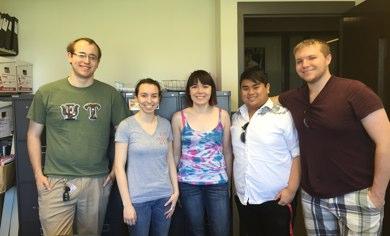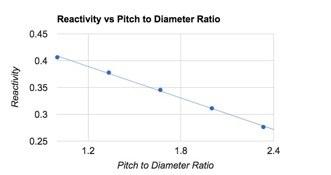The goals for this project included: designing a core with a minimum lifetime/refueling cycle of sixty years, designing a core with a power rating of 1000 MWt, and decreasing the exposure to workers in the power plant. By offer a lifetime of at least 60 years, the design will be competitive with the present fleet of commercial reactors. The low power rating would allow for there to be flexibility in the placement of the reactor into the electric grid. Since no single power plant is allowed to provide the majority of the power entering the grid, smaller power reactors provide more placement options. Lastly, the decrease in required refueling maintenance will help to cut back on the radiation exposure to workers in the plant.
Team: Martin Bui, Hanna Johnson, Trevor Molineaux, William Venden, Megan Wart
Project Advisor: Dr. Sasstry Sreepada

Project Motivation
Thorium-232 has many advantageous properties as a reactor fuel. It is a fertile isotope that can be bred into Uranium-233, which is usable as a fissile reactor fuel. It also is more naturally abundant than uranium, with an estimated world supply of 6,355,000 metric tons. Thorium in its oxide form has a high melting point, is relatively inert, as well as having a higher thermal conductivity and lower thermal expansion than uranium oxide.
In order to be used as reactor fueled, thorium must be mixed with a fissile isotope, such as Uranium-233, Uranium-235 or Plutonium-239. Though these materials can be hard to obtain, using a Thorium mix fuel promotes the recycling of nuclear fuel materials. Through recycling and breeding the world's nuclear resources can be greatly extended and the waste output can be decreased.
Project Description
The goals for this project included: designing a core with a minimum lifetime/refueling cycle of sixty years, designing a core with a power rating of 1000 MWt, and decreasing the exposure to workers in the power plant. By offer a lifetime of at least 60 years, the design will be competitive with the present fleet of commercial reactors. The low power rating would allow for there to be flexibility in the placement of the reactor into the electric grid. Since no single power plant is allowed to provide the majority of the power entering the grid, smaller power reactors provide more placement options. Lastly, the decrease in required refueling maintenance will help to cut back on the radiation exposure to workers in the plant.

Neutronics model results
Results and Accomplishments
The resulting design is a fast spectrum, breeder reactor that runs on Th-Pu mixed-oxide fuel. These were picked for the breeding ratio they would provide. Additionally, burning Pu in reactors does not produce new Pu, which supports non-proliferation practices. It was decided to cool the core with Pb due to the the need for a non-moderating coolant. In addition, it does not pose an explosion risk when it comes in contact with water, unlike molten salts. This combination of design parameters, along with a set reactor power output of 1000 MWt, were used to create models of the neutronics and thermodynamics of the core. The models were based on varying the pitch to diameter ratio for the fuel lattice. Through comparison of the results of the models, the pitch to diameter ratio was chosen to be 1.2. As a result, the estimated lifetime for this design, based solely on neutronics, is 79.9 years. Using a shield of borated steel and requiring little maintenance as compared to a traditional reactor means that the radiation dose of the plant workers will be greatly decreased; eliminating the need for refueling will also make it difficult to proliferate radioactive waste.